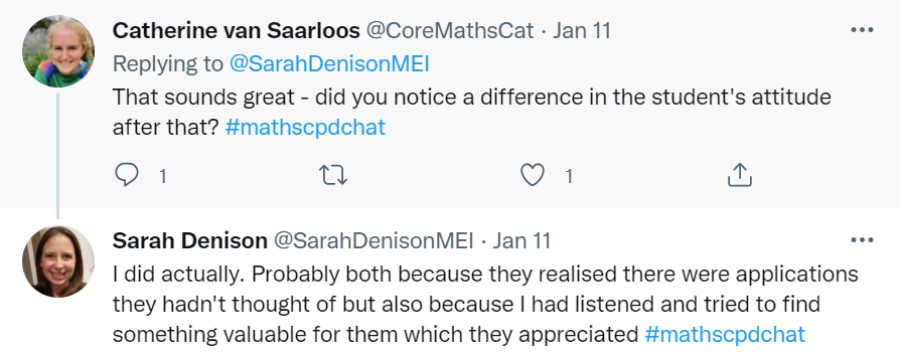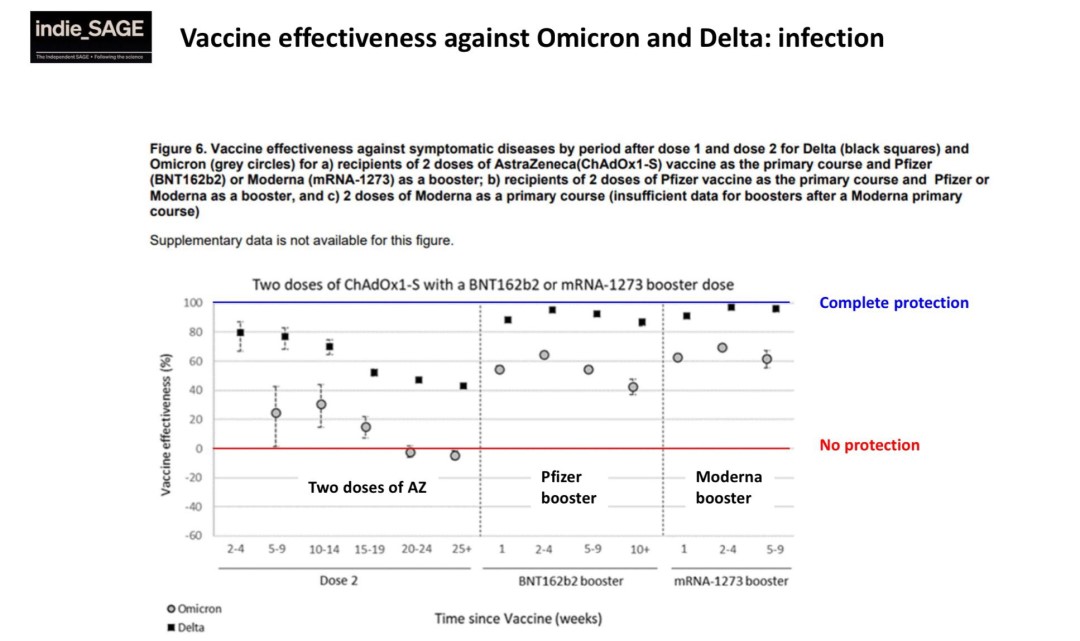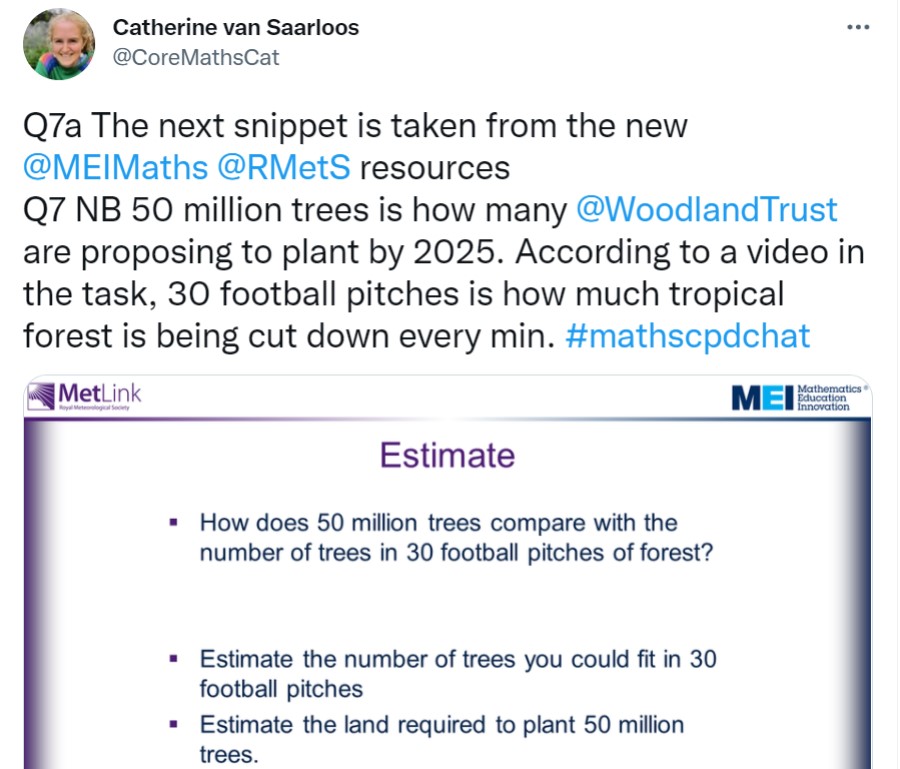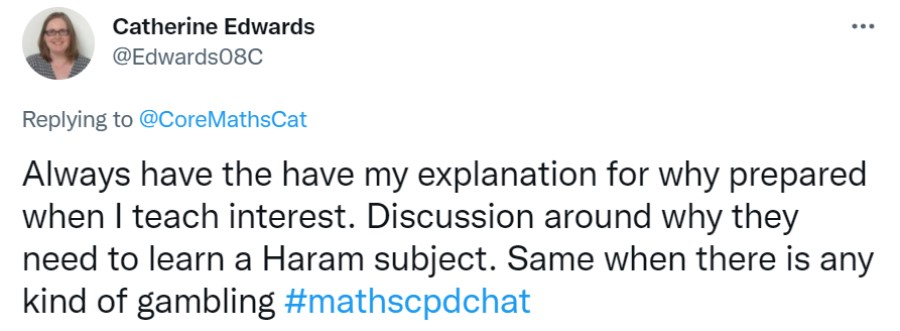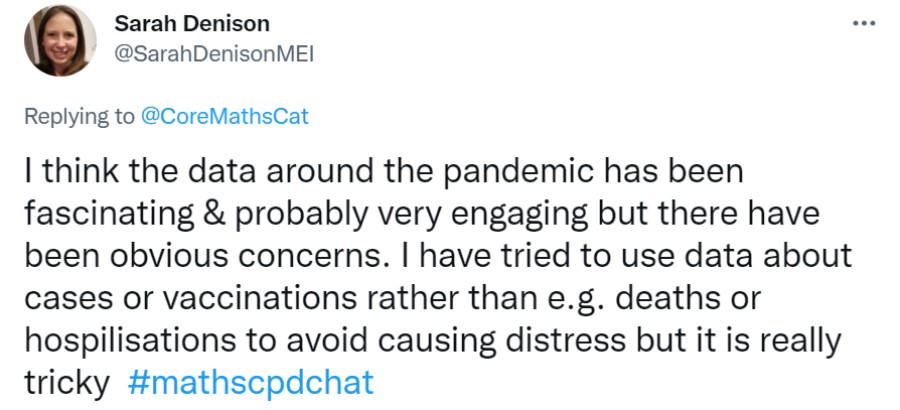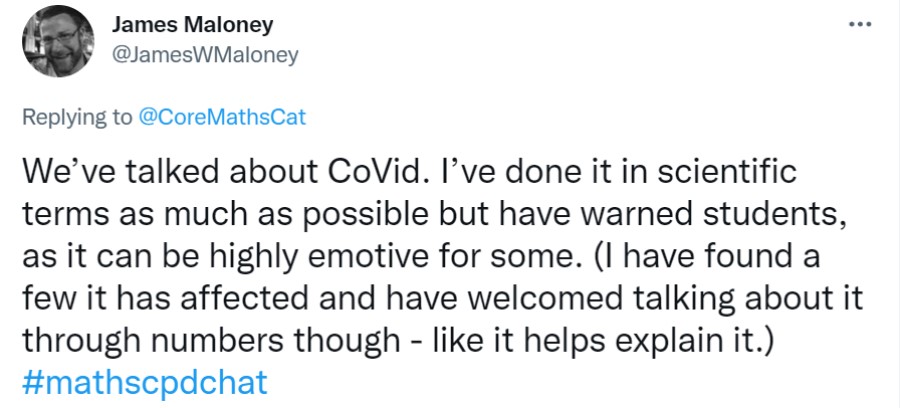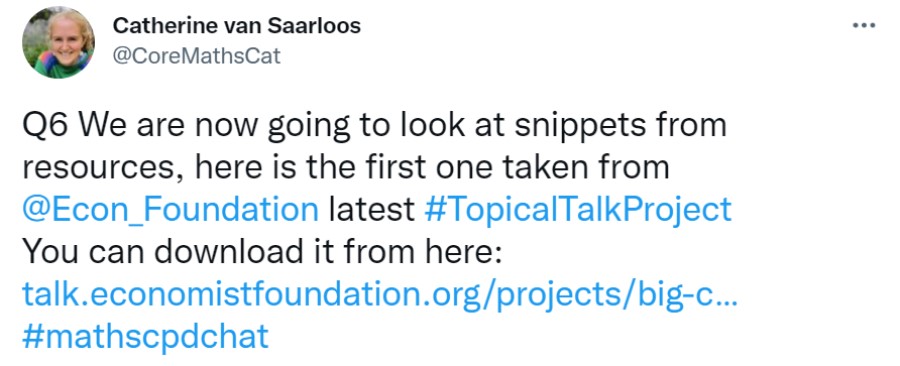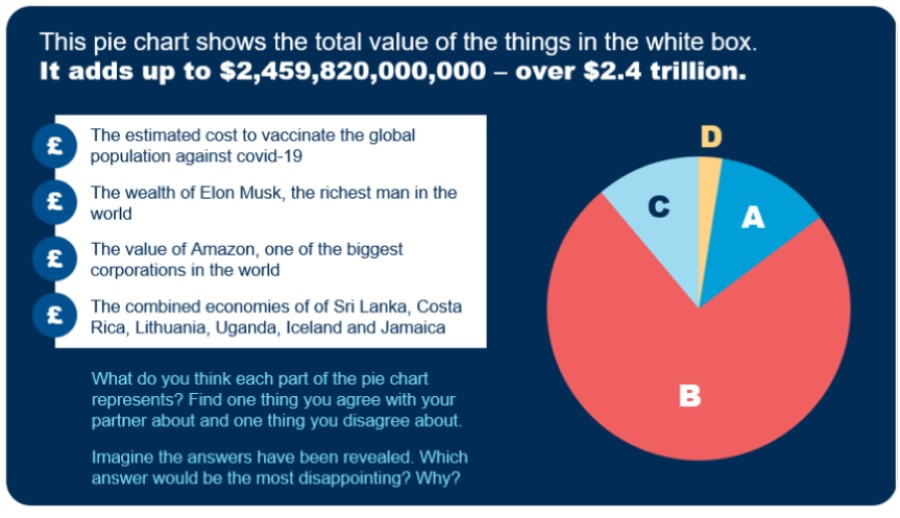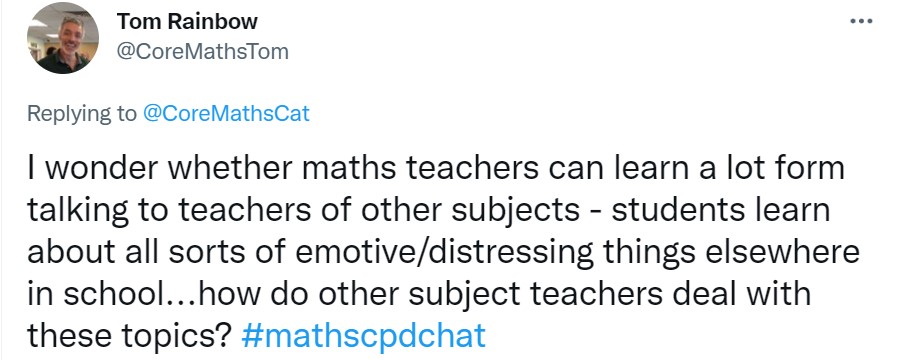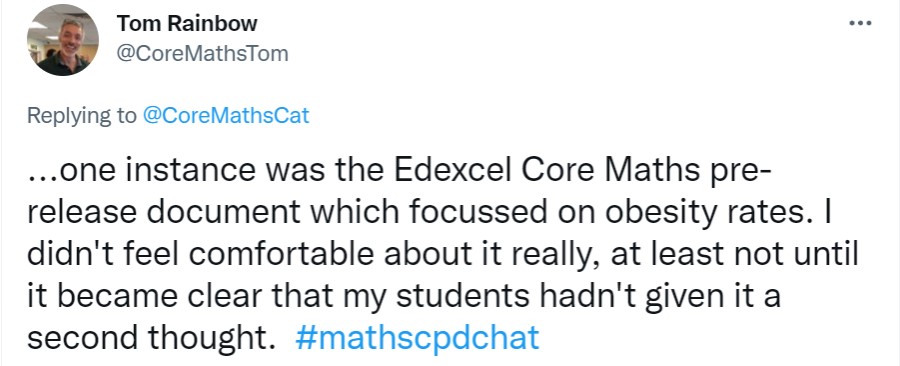Teaching maths in a real-life context
Teachers discuss the joys, the challenges and good resources
27/01/2022

Teaching a crammed curriculum or preparing students for an imminent GCSE or A level exam can make maths seem a million miles from the real world. It’s something students waste no time in telling us. Yet a strong mathematical understanding is absolutely crucial for interpreting the increasingly complex world we live in and the information we are fed. Despite the best intentions, teachers often lack the time, resources or applied knowledge to address the frequent student lament “What’s the point in learning this? When am I ever going to use it?”
In a recent #mathscpdchat (the NCETM’s Tuesday night CPD discussion platform), teachers from all phases got together on Twitter to discuss the difficulties and the joys of trying to contextualise their maths lessons, sharing ideas, inspiration and resources. In this piece, we have pulled out five of these ideas, with some accompanying discussion, and links to resources.
Using student needs and interests can make a good starting point for finding an authentic context, as in these first two examples:
1. What maths does a nurse use?
2. Calculating tax
Students pay tax on most purchases, and as they get older, become increasingly aware of and interested in taxes that they will have to pay as adults. One contributor described using this interest to drive his lessons:
3. The maths of the Covid-19 pandemic
Modelling, exponential growth and data-driven decision making have all come to the forefront of public consciousness during the pandemic, but how much are your students able to interpret, critique and understand the data and figures they are seeing?
The Economist Education Foundation's Topical Talk from 12 January 2022 (free download - registration required) was recommended and discussed, as well as the graph below (tap or click to enlarge) from SAGE (data from the UK Health Security Agency COVID-19 vaccine surveillance report, 6 January 2022):
4. The maths of climate change modelling
Predictions about the magnitude of future climate change is also an area where mathematical modelling, with varying assumptions, is driving policy, science and campaigning. The snippet below is from MEI's resource Maths and Climate Change.
Participants discussed the use of controversial topics and how to manage this with students.
5. Social justice of wealth
Looking at data such as that displayed in the pie chart below can be emotive. Managing class discussions requires skills that maths teachers may feel less well prepared for than teachers of more traditionally discursive subjects. Pie chart taken from The Economist Educational Foundation Big corp power resource (free registration required), session 1, slide 7.
Participants in the chat also discussed:
- the pros and cons of introducing the context or the mathematical skills first
- the freedom that teaching post-16 Core Maths courses has given them to explore different mathematical contexts
- the dangers of trying to force a context into the maths
- the difficulties of trying to cover curriculum content as well as using relevant contexts within time pressures
- What makes a context 'authentic'?
You can read an account of the full discussion, and on our Maths CPD chat page find out how to join future discussions, and what topics are coming up. Or you can go straight to Twitter to catch up on the latest chat: #mathscpdchat. All welcome!



